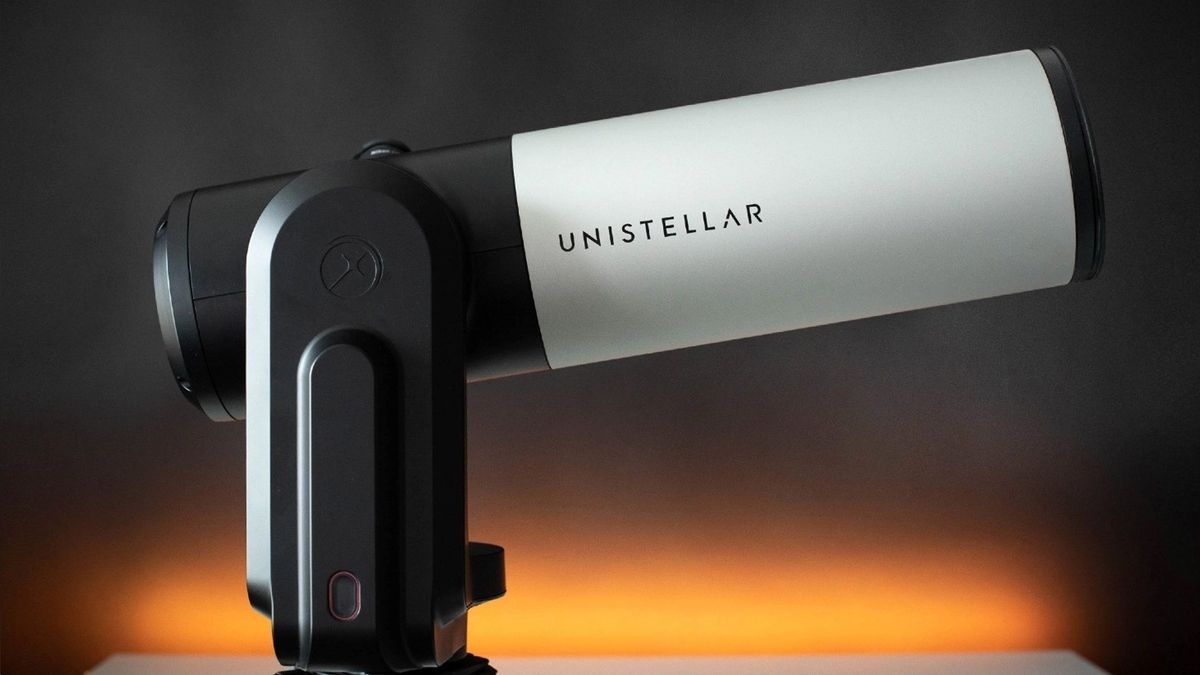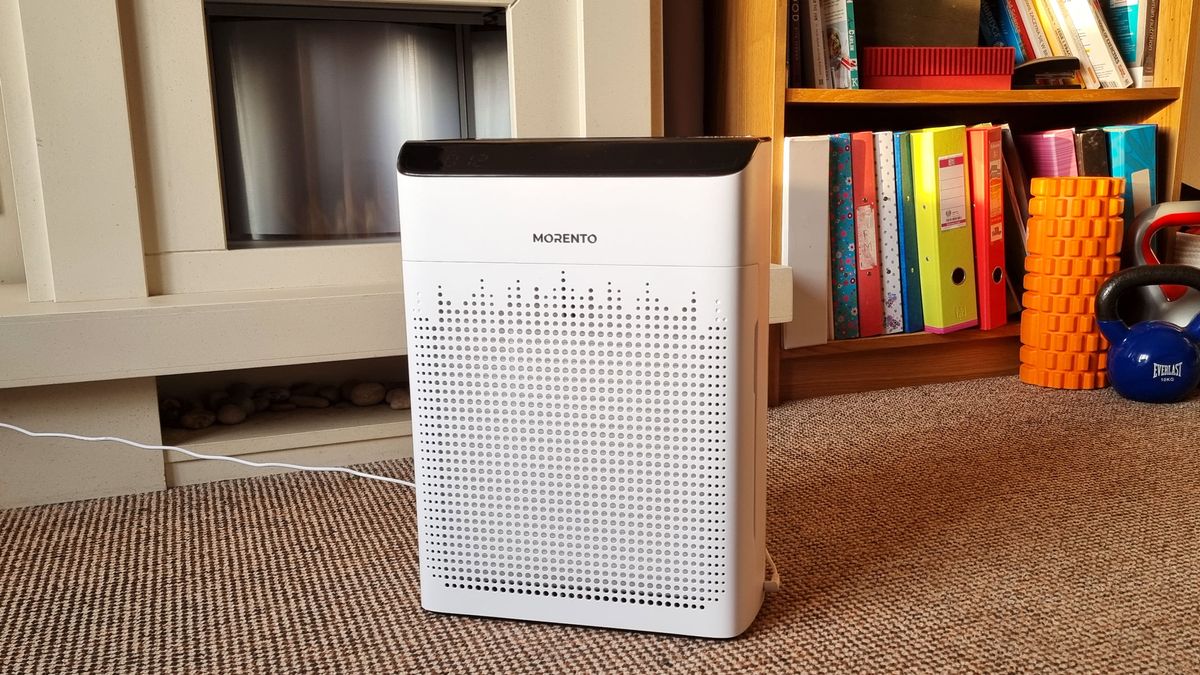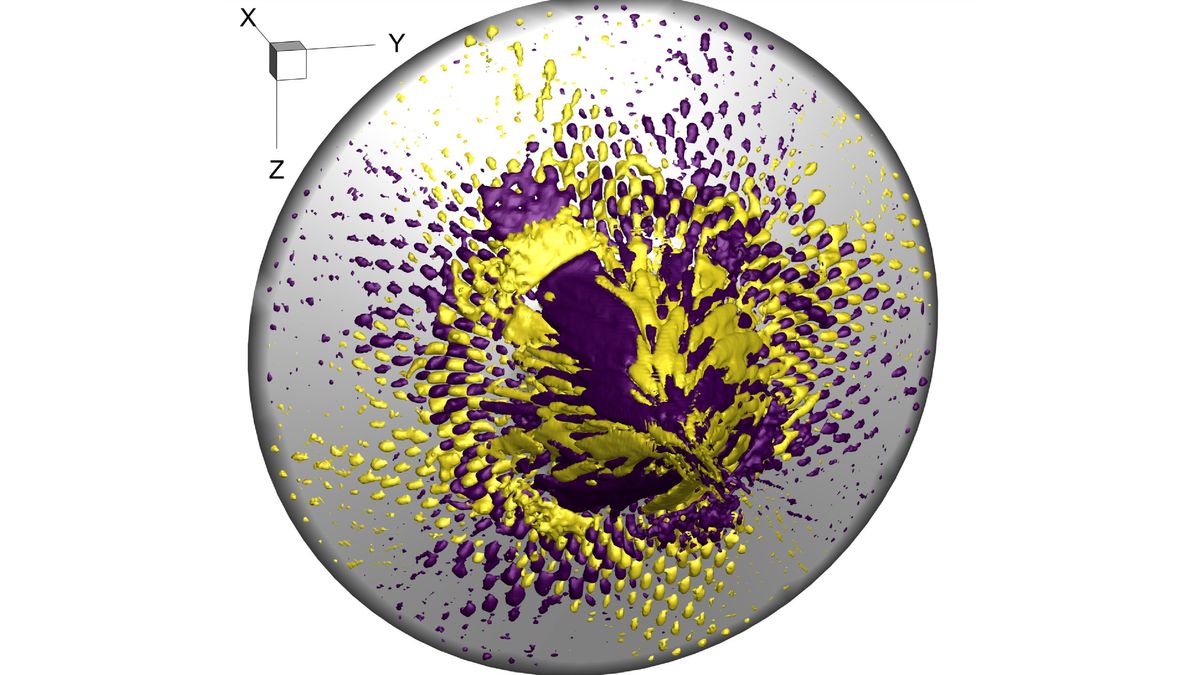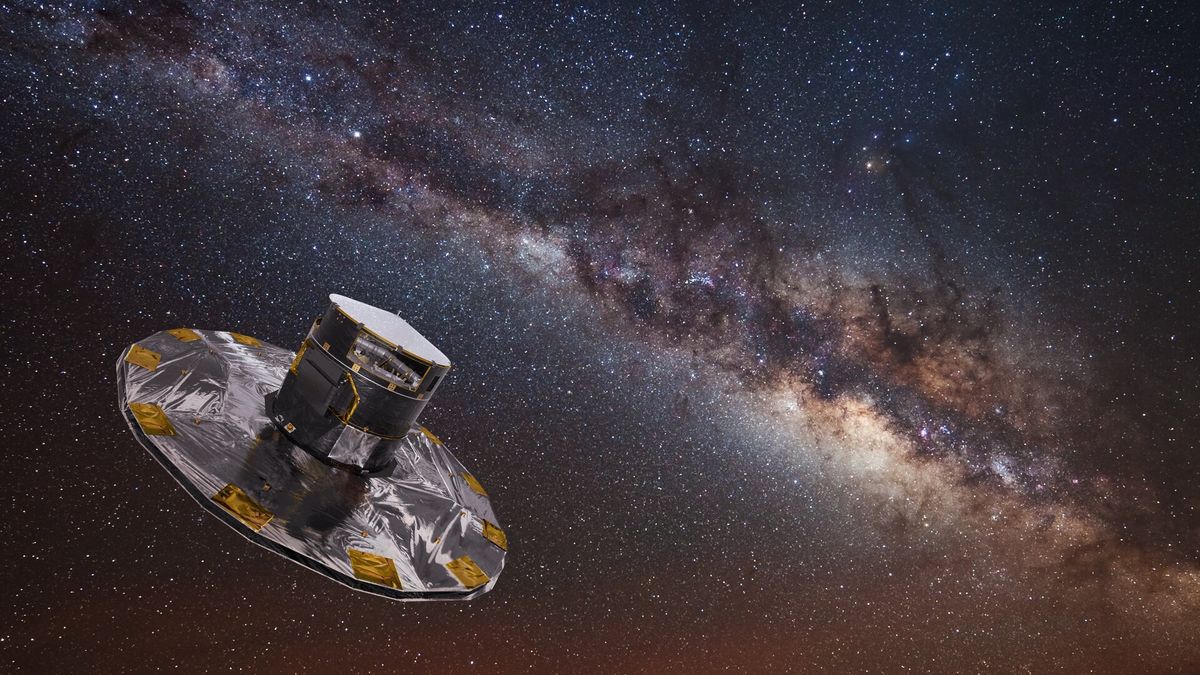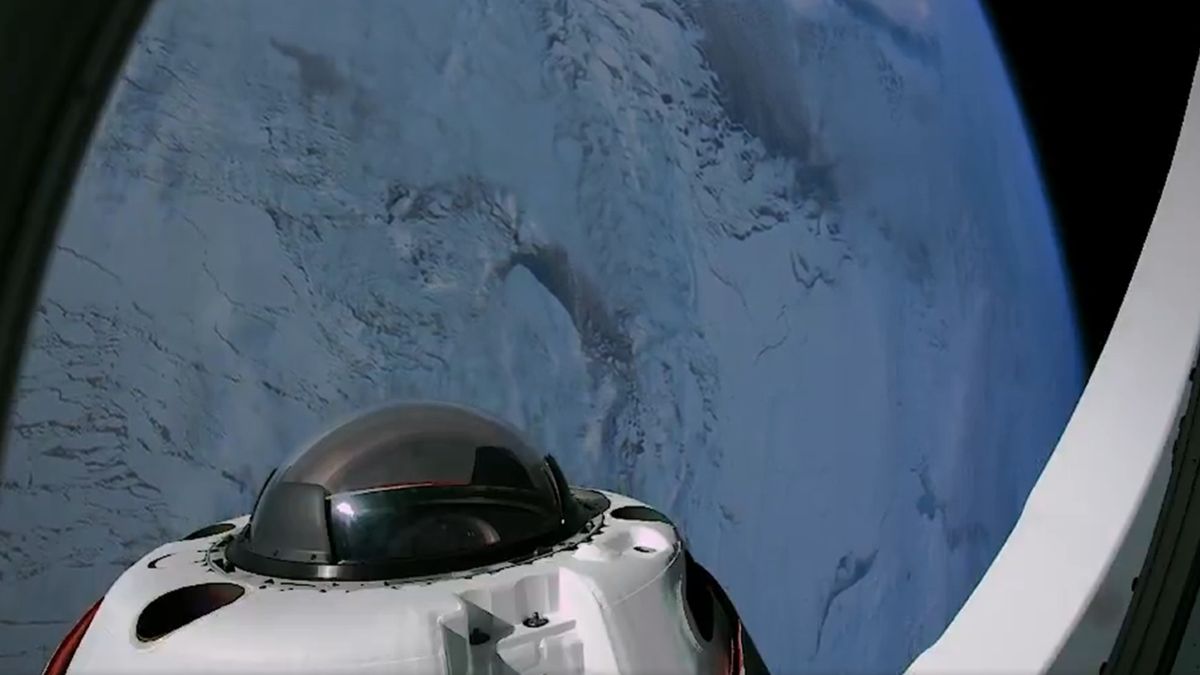One of the latest technological trends to hit the world of astronomy are smart telescopes. Taking some of the best aspects of stargazing and astrophotography and melding these together into an all-in-one product, smart telescopes allow you to see and image the cosmos all with one automated device.
These scopes are incredibly beginner-friendly, since they will automatically slew to the target of your choice as soon as you select it in the accompanying app. From there, they will focus and take multiple shots of the target, stacking these on top of one another to create the effect of one super-long exposure without you having to do a thing.
While some people may prefer looking through a traditional optical telescope, smart telescopes have a significant advantage when it comes to stargazing in the city, since they’re capable of seeing through a large amount of light pollution. They also make it supremely easy to share your stargazing experience with your friends and family.
Our expert reviewers have narrowed down the best models in a fast-growing field, evaluating their pros and cons and testing them out in real-life situations. Read on to find out their thoughts.
The quick list
Best overall
Offering everything you need from a smart telescope in a sleek and compact package, the Vaonis Vespera II produces detailed 8.3MP images and represents fantastic value for money.
Read more below
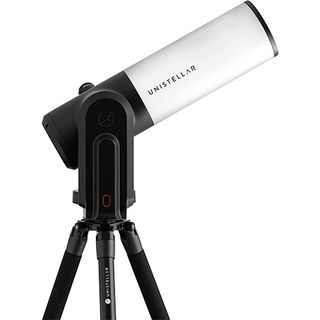
Best premium
A beautifully constructed smart telescope with a premium feel. Traditionalists will enjoy the vibrant micro OLED eyepiece included on this scope, but it comes at a steep cost.
Read more below
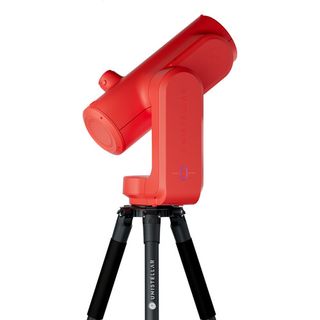
Best for portability
The lightest smart telescope on our list, the Unistellar Odyssey Pro is slim and compact, making it excellent for carrying around with you, and it’s also fully automated.
Read more below
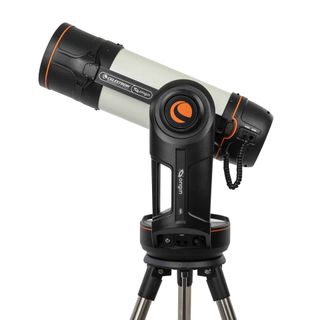
Best classic style
For those wanting a more traditional-looking smart telescope, the Celestron Origin may be the one. It houses all its clever smart technology inside a classic tube design.
Read more below
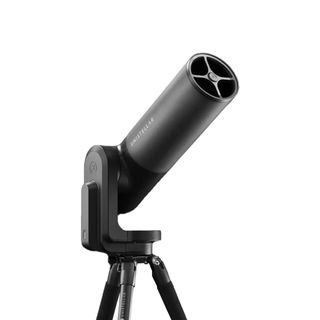
Best all-rounder
The Unistellar eQuinox 2 is a versatile smart telescope that produces fabulous images of deep-sky objects, while also being able to image closer neighbors like the sun.
Read more below
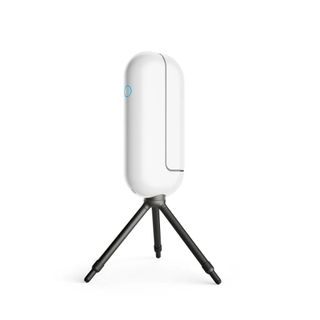
Best budget
For those on a budget, the Vaonis Vespera is a great entry point into the world of smart telescopes. It’s small and capable, with plenty of additional features.
Read more below
If you’re not quite ready to plunge into the world of smart telescopes yet, then we also have guides to the best telescopes overall and the best astrophotography cameras for those wanting to build a more traditional setup. And if you need some extra help on where to start, check out our beginner’s guide to astrophotography to find out about all the equipment you need to set yourself up for success.
Best smart telescopes we recommend in 2025
Why you can trust Live Science
Our expert reviewers spend hours testing and comparing products and services so you can choose the best ones for you. Find out more about how we test.
Best smart telescope overall
Buy it if:
✅ You want value for money: This telescope is so good that it even edges out much more expensive competitors.
✅ You want stunning images: The 8.3MP resolution offers highly detailed and colorful images, especially when stacked.
✅ You’re viewing from a light-polluted area: With the light pollution filter attached, this telescope performs impressively well even next to street lamps.
Don’t buy it if:
❌ You want to capture images of planets: Planets appear too small in the field of view to be of much use.
❌ You don’t want to have to buy extras: You’ll probably want to buy an adjustable tripod and compatible filters to get the most out of this scope, none of which are included in the package.
The bottom line
🔎 Vaonis Vespera II: We think this is one of the best smart telescopes on the market, especially for the price you pay. It produces incredible deep-sky images via a fully automated system — just don’t expect great views of the planets. ★★★★★
The Vaonis Vespera II is a significant upgrade on the original Vaonis Vespera (which we review further down this page), while not adding a huge amount to the price. It offers excellent value for money, and we think it’s one of the best smart telescopes you can buy.
Design: The telescope is formed of a sleek, glossy white shell with a rotating arm that extends out when the telescope is in use. The look is very futuristic and minimalistic, with only a single power button on the main body, along with a port for USB-C charging. It comes with a fixed-height tripod which is very secure, but we’d recommend investing in the adjustable tripod (sold separately) to improve your vantage point, particularly for observing objects that appear low to the horizon.
Performance: We were seriously impressed with the views offered by this scope in our Vaonis Vespera II review. It edges out even some more expensive smart telescopes like the Unistellar eQuinox 2, thanks in large part to its mighty 8.3MP image sensor. With the automatic image stacking, we were able to get incredible pictures of deep-sky objects like Andromeda Galaxy (M31) and the Orion Nebula (M42). The images were sharp, detailed and vibrant in color, with contrast and detail continuing to improve over longer exposures. The design of the Vaonis Vespera II makes it supremely easy to change out different filters (though these are sold separately). With the light pollution filter attached, its performance in heavy light pollution was admirable, even when using it in close proximity to street lamps, making this an excellent choice for anyone stargazing from within a city.
Functionality: Control of the Vaonis Vespera II all takes place through the Singularity app. Despite a few niggles, like the lag in letting you know about a failed observation, the app generally works well. Simply tap on a target, and the telescope will automatically slew to that location and focus its image. It will even display some interesting facts and information about your target while you wait for it to do its thing. Another cool feature is the “Mosaic” mode, which allows you to meld together images from different exposures to give you a much broader field of view.
Overall, we would strongly recommend the Vaonis Vespera II to anyone looking for a powerful and capable smart telescope. It offers stunning image quality and fantastic value for money.
|
Attributes |
Notes |
|---|---|
|
Design |
Futuristic and minimalistic design. |
|
Performance |
Extremely sharp and detailed images. |
|
Functionality |
“Mosaic” mode to extend your field of view. |
Best premium smart telescope
Buy it if
✅ You want a premium product: Every aspect of this telescope feels sleek and premium.
✅ You enjoy using an eyepiece: The inclusion of a micro OLED electronic eyepiece greatly enhances the viewing experience for those who are used to traditional telescopes.
✅ You want some manual controls: The telescope includes a manual focusing ring and the option for manual positioning.
Don’t buy it if:
❌ Price is a factor: This telescope is incredibly expensive, even for a smart telescope, so will only appeal to those with very big budgets.
❌ You want the highest image resolution: Whilst the image resolution is excellent for a smart telescope, it still can’t compete with a traditional DSLR setup.
The bottom line
🔎 Unistellar eVscope 2: No expense has been spared in the construction of this telescope, and it shows. We loved the Nikon eyepiece and the all-round premium experience of using this scope, but you’ll need a hefty budget. ★★★★½
The Unistellar eVscope 2 is a thing of beauty, right down to the Nikon micro OLED eyepiece, and its field of view offers fantastic images of larger deep-sky objects.
Design: This telescope is beautifully designed throughout. It is formed of a sleek tube in gunmetal gray set on a robust matte-black mount. In our Unistellar eVscope 2 review, we were impressed by all the fine details, including its lens cap, which houses a hidden Bahtinov mask inside. A big highlight is the Nikon micro OLED eyepiece, which will appeal to astronomers who are accustomed to traditional telescopes and comes with a comfortable rubber surround. You also get a manual focusing ring on the rear end of the tube for fine-tuning your shots.
Performance: The movement of the mount is slick and speedy and the “Enhanced Vision” of the scope reveals far more stars than you could possibly hope to see with the naked eye, particularly in light-polluted cities. The telescope produces fantastic images of large deep-sky objects like Andromeda Galaxy (M31), but can equally produce great pictures of the lunar surface, too. We found that the manual focusing ring tended to lag a little before showing up on the live view of the telescope, but this didn’t affect the overall experience too much.
Functionality: We really enjoyed using the Nikon eyepiece on this telescope. It offers much more of a real-life viewing experience than just watching the images on your phone screen, and you’ll find you can see much better in the dark with it than you can with traditional optical eyepieces (although the downside is that you can’t adjust the view with Barlow lenses or other accessories). The scope is fully automated via the Unistellar app, which will offer you recommendations for viewing based on the time, date and your GPS location. For anyone who wants a bit more control, there’s also the option to enable “Advanced” mode, which allows you to use Go To Ra/Dec or Go To Alt/Az.
This is a premium smart telescope at a premium price, but if you have the money to spend, then we don’t think you’ll be disappointed.
|
Attributes |
Notes |
|---|---|
|
Design |
Sleek, premium feel. |
|
Performance |
Smooth movements and detailed images. |
|
Functionality |
Nikon micro OLED electronic eyepiece. |
Best for portability
Buy it if:
✅ You want something to carry around with you: This is the lightest smart telescope on our list and its small form factor makes it extremely portable.
✅ You want an eyepiece: There is a high-quality Nikon electronic eyepiece on this telescope.
✅ You want something fully automated: This telescope is perfect for those without prior knowledge because everything on it is automated.
Don’t buy it if:
❌ You want manual controls: You don’t get any manual control options with this telescope.
❌ You want the top specs: While it performs well in most areas, it doesn’t have the highest specs in terms of image resolution, aperture or focal length.
The bottom line
🔎 Unistellar Odyssey Pro: A compact and lightweight smart telescope that is ideal for carrying with you on your search for darker skies. It has a Nikon electronic eyepiece but lacks any manual control options. ★★★★½
With its small and compact form factor, the Unistellar Odyssey Pro is the lightest smart telescope on our list, making it a great companion for those who need something more portable.
Design: With the Odyssey Pro, Unistellar has created a smart telescope that is significantly lighter in weight than the other offerings in its line. It has a motorized single fork arm and a shorter tube than the eVscope 2 or the eQuinox 2, but it matches the eVscope 2 with its Nikon electronic eyepiece, which will appeal to those who enjoy a more traditional viewing experience. It comes in a smooth black finish, or you can pay extra to get it in a statement red color.
Performance: The Odyssey Pro is quick and easy to set up and we were pleased with the images it produced of deep-sky objects. Pictures of nebulas came out detailed and colorful, even in the presence of light pollution. Unistellar’s “Deep Dark Technology” handles light pollution and image noise extremely well, producing clear shots with pinpoint stars. With a solar filter attached, you can also take excellent shots of the sun, showing up a range of sun spots.
Functionality: The system is fully automated via the Unistellar app, meaning that you can operate this telescope without any prior knowledge of the night sky at all. More experienced astronomers might miss having the option for manual controls because there is no way of adjusting the focus or collimation yourself on the Odyssey Pro if something doesn’t go to plan. But those who are used to traditional telescope setups may enjoy the Nikon electronic eyepiece that Unistellar has included on the Odyssey Pro, with a small screen showing you a live image of what the telescope is seeing. If you’re not bothered by the electronic eyepiece, then you can also opt for the basic Odyssey model which is exactly the same telescope without the eyepiece and saves you around $1,700.
We’ve yet to do a full review of the Odyssey Pro here at LiveScience.com, but you can head to the full review over at Space.com, our sister site, for more information.
|
Attributes |
Notes |
|---|---|
|
Design |
Compact and lightweight. |
|
Performance |
Bright and colorful images. |
|
Functionality |
Fully automated, with Nikon eyepiece. |
Best classic style
Buy it if
✅ You want to photograph deep sky objects: This is where this scope really excels, producing sharp and vibrant images of galaxies, nebulas and more.
✅ You’re a beginner: All the settings are fully automated so you don’t need any previous experience to get fabulous shots.
✅ You want a traditional looking scope: The Celestron Origin houses all its nifty technology inside a classic telescope tube.
Don’t buy it if:
❌ You need something portable and lightweight: At 41.6 lb (18.6 kg), this is a heavy scope to be carrying long distances.
❌ You’re a seasoned astrophotographer: Anyone looking for full manual control may find themselves getting frustrated by the limitations of this scope.
The bottom line
🔎 Celestron Origin: A fuss-free smart telescope that produces excellent images of deep sky objects and has a traditional feel. It’s easy to set up and fully automated, but has limited manual controls for more experienced users. ★★★★½
With the Celestron Origin, Celestron has produced one of the easiest telescopes to get set up and running straight out of the box. Simply erect the tripod, attach the optical tube and fire up the app, and you’ll be taking your own images in just a few taps. All the settings on the Celestron Origin are fully automated, so you don’t need any prior knowledge to capture some incredible astrophotography shots.
Design: One of the things we enjoyed in our full Celestron Origin telescope review was the traditional appearance of this scope. It features Celestron’s classic tube design, alongside a sturdy tripod with marker lines to ensure all the legs can be set to the same height. There are no controls on the tube itself, since everything is operated via the Origin app. It is a hefty unit at 41.6 lb (18.6 kg), but there are convenient carry handles for moving it around.
Performance: We were very impressed by the images the Celestron Origin took of deep-sky objects. Targets like nebulas and galaxies appeared sharp and colorful, with no discernible noise, and it produced clear and pinpoint stars throughout. This is definitely a scope that anyone interested in deep-sky objects would love to get their hands on, especially if they’re having to contend with light pollution in a city.
Functionality: The app has a clear and intuitive interface, offering several different views. “Planetarium View” displays what’s visible in the sky that night and circles particular objects of interest to select. When you tap on an object, the Origin will do all the locating and focusing for itself, stacking and processing images as it goes. “Camera View” offers you the chance to see what the Origin is seeing in real time, and “Snapshot” allows you to access some manual settings like ISO, exposure and focus depth, though we found this worked better for the moon than for Saturn.
If you can stomach the cost, we think deep-sky enthusiasts would love the images produced by this scope, as well as its simple and easy-to-use design.
|
Attributes |
Notes |
|---|---|
|
Design |
Traditional telescope tube. |
|
Performance |
Sharp and colorful images. |
|
Functionality |
Fully automated via the Origin app. |
Best all-rounder
Buy it if
✅ You want to look at a wide range of targets: The field of view means you can get images of the sun and planets as well as great deep-sky shots.
✅ You’re viewing from a city: The Smart Light Pollution Reduction feature works well.
✅ You want some manual controls: You get a manual focusing wheel on this scope, as well as the option for manual slewing.
Don’t buy it if:
❌ You’re on a budget: This is a pricey scope and there are some cheaper options available.
❌ You want something portable: While this isn’t the heaviest scope on our list, it’s fairly large to be carrying around with you for any length of time.
The bottom line
🔎 Unistellar eQuinox 2: For those with the budget, this is a great all-rounder smart telescope, offering views of closer neighbours like the sun and planets, as well as deep-sky objects. ★★★★½
If you’re hoping to capture images of some of our closer neighbors like the sun and planets, as well as deep-sky objects like galaxies and nebulas, then the Unistellar eQuinox 2 might be the smart telescope for you.
Design: In our Unistellar eQuinox 2 review, we enjoyed the smooth, classy design of this scope. It has a two-tone black tube and a matte black fork arm mount with a single power button that shines red when the telescope is connected to the app. Once the telescope is attached to the tripod, the whole setup feels rock solid, and we had no concerns about it getting knocked and falling over. At 19.8 lb (9 kg), it’s not the lightest telescope on our list, but nor is it the heaviest for carrying around either. You also get a focusing wheel on the end of the tube with this telescope, which will appeal to those who want a little more manual control during their skywatching.
Performance: When you enable the “Enhanced View” mode in the app, the Unistellar eQuinox 2 cleverly stacks multiple pictures on top of each other to create the illusion of a long-exposure shot. The result is clear, noise-free images of deep-sky objects like the Whirlpool Galaxy (M51) that you’ll be excited to share with your friends. It can handle pictures of the sun and planets, too, though we found the images it took of the moon a little underwhelming and lacking in sharpness. The in-built Smart Light Pollution Reduction feature does a great job of digitally removing the effects of light pollution, allowing this telescope to be used in the city or from your backyard.
Functionality: The Unistellar eQuinox 2 is operated via the Unistellar app, and we were impressed that the connection works even through walls or windows, allowing you to hide out inside and keep warm while the eQuinox 2 does its thing. You can use the “Catalog” mode to select from a huge range of objects and the telescope will automatically slew to them, effectively lodging the target right in the center of the frame. It will even present you with some interesting information about your chosen object while it takes its pictures.
|
Attributes |
Notes |
|---|---|
|
Design |
Classy two-tone tube design. |
|
Performance |
Produces bright images of various targets. |
|
Functionality |
App controls work through walls and windows. |
Best budget smart telescope
Buy it if
✅ You’re shopping on a budget: While this is still an expensive scope, it’s one of the more affordable smart telescopes on the market.
✅ You need something portable: Its compact form and 11 lb (5 kg) of weight makes this telescope easy to take with you to dark-sky areas.
✅ You like to observe as part of a group: The WiFi can support up to eight connected devices at a time.
Don’t buy it if:
❌ You want to capture images of planets: The field of view is too large for effective planetary imaging.
❌ You want a complete kit: Many of the necessary accessories for the Vaonis Vespera need to be bought separately.
The bottom line
🔎 Vaonis Vespera: A fun and enjoyable entry point into the world of smart telescopes for those on a budget, with live image stacking and a large field of view. ★★★★
The Vaonis Vespera is a fun and enjoyable smart telescope that comes in at a lower price point than many of its competitors. With live image stacking, you can watch images of galaxies and other objects emerge from the darkness before your very eyes and share those images with your family and friends.
Design: The appearance of the Vaonis Vespera will definitely provide a talking point. It has a sleek and futuristic white design with an arm that folds out when the telescope is in use. At only 11 lb (5 kg) in weight, this compact design makes it eminently portable when journeying to dark-sky locations. The package comes with a small table-top tripod measuring 7 inches (18 cm), but fortunately there is a 3/8ths thread for fitting it to a larger tripod (though you will have to buy this separately, along with a light pollution or solar filter if you wish to use them).
Performance: The large field of view on the Vaonis Vespera tends to favor deep-sky objects over planets. In our Vaonis Vespera review, we successfully captured pleasing images of Bode’s Galaxy (M81) and Cigar Galaxy (M82), although these did appear quite small in the field of view. There’s a real thrill to watching the images form in real time on your screen, with brighter images appearing after a few dozen seconds and fainter objects needing much longer. Images can be saved in JPG, TIFF or RAW form for editing later.
Functionality: Everything on the Vaonis Vespera is automated through the Singularity app, from locating objects to focusing images. With “Mosaic Mode”, you can expand the field of view by up to four times by joining different exposures together — great for accommodating larger objects like the North America Nebula. The “Plan Your Night” function allows you to select a list of desired targets and exposure times and then leave the Vespera to automatically work its way through your list. You can also link up to eight devices to the Vespera simultaneously, allowing you to share images with others in real time and making it a great device for group skywatching adventures.
This telescope is becoming increasingly tricky to find new, but you can grab some amazing deals on a used version, with some selling for as little as half the list price.
|
Attributes |
Notes |
|---|---|
|
Design |
Sleek and futuristic design. |
|
Performance |
Enjoyable real-time stacking. |
|
Functionality |
Share with up to eight devices at a time. |
Best smart telescopes: comparison
| Row 0 – Cell 0 |
Image resolution |
Aperture |
Focal length |
Focal ratio |
Field of view |
Storage |
Battery |
Weight |
|
Vaonis Vespera II |
8.3 MP |
2-inch / 50mm |
250mm |
F/5 |
2.5 x 1.4 degrees |
25 GB |
4 hrs |
11 lbs / 5 kg |
|
Unistellar eVscope II |
7.7 MP |
4.5-inch / 114mm |
450mm |
F/4 |
0.57 x 0.76 degrees |
64 GB |
9 hrs |
19.8 lbs / 9 kg |
|
Unistellar Odyssey Pro |
4.1 MP |
3.35-inch / 85mm |
320mm |
F/4 |
0.56 x 0.75 degrees |
64 GB |
5 hrs |
8.8 lbs / 4 kg |
|
Celestron Origin |
6.4 MP |
6-inch / 152mm |
335mm |
F/2.2 |
1.27 x 0.85 degrees |
Based on a paired mobile device |
6 hrs |
41.6 lbs / 18.6 kg |
|
Unistellar eQuinox II |
6.2 MP |
4.5-inch / 114mm |
450mm |
F/4 |
0.54 x 0.76 degrees |
64 GB |
11 hrs |
19.8 lbs (9 kg) |
|
Vaonis Vespera |
2 MP |
2-inch / 50mm |
200mm |
F/4 |
1.6 x 0.9 degrees |
10 GB |
8 hrs |
11 lbs / 5 kg |
Best smart telescopes FAQ
How are smart telescopes different from traditional telescopes?
Instead of having a traditional optical setup with an eyepiece that you can see through, smart telescopes take photographs of your target and automatically stack them on top of each other to create the effect of a long-exposure shot. They then send the resulting image to your smartphone or tablet for viewing and sharing.
Some smart telescopes include an electronic eyepiece that will display a live view of what the telescope is seeing, but it’s not a direct optical view of the night sky. Because of the way they work, smart telescopes are very adept at seeing through light pollution, so they don’t require you to seek out dark-sky locations in the same way that traditional telescopes do (although it never hurts to do so). They also come with fully automated Go To mounts that will slew to your target of choice at the push of a button, taking a lot of the hard work out of collimating and focusing your telescope.
Why are smart telescopes so expensive?
Fundamentally, because they’re packing in a lot of clever technology! When you buy a smart telescope, you’re essentially buying an all-in-one astrophotography setup. So when you consider the cost of buying all those elements separately (one of the best telescopes, alongside one of the best astrophotography cameras), the price doesn’t seem that bad.
You’re also paying for the ease of use. Smart telescopes require very little setting up and you don’t need to position them and focus them yourself. In the time it would take you to get a handful of decent shots with a traditional astrophotography setup (let alone the time it would take you to edit those images), you could be taking home hundreds of shots with a smart telescope.
Do you need a lot of experience to use a smart telescope?
No, and that’s one of the beauties of this bit of technology. Anyone can use a smart telescope, right down to complete beginners who have no prior knowledge of the night sky or astrophotography techniques. That’s because everything on a smart telescope can be fully automated via the accompanying app. Some smart telescopes also come with the option for manual controls, like focusing rings, to allow more experienced users to hone their shots themselves.
What is the best smart telescope?
This depends on your needs, but for the average user we think that the Vaonis Vespera II is the best smart telescope to buy. It offers fantastic image quality, fully automated functionality and comes in at an affordable price. For experienced users who want more manual options and have a bit more money at their disposal, we also highly rate the Unistellar eVscope 2 for its premium feel and more advanced controls.
Latest updates
Going forward we will log updates to this guide here.
How we test the best smart telescopes
All the smart telescopes in this guide were tested by experienced reviewers with an in-depth knowledge of optics, astronomy and astrophotography. We take each telescope out and put it through its paces in real-life situations, from light-polluted backyards to dark-sky locations, to see how it performs under different lighting conditions.
A key element of any smart telescope is its app, so we make sure to go through all the different functions to highlight any snags and give our readers an honest opinion on its interface. Where a smart telescope has manual functions, we also make sure to test those out and check whether they work as well as the telescope’s automated functions.
One of the most important aspects of any telescope is its image quality, so we test all our smart telescopes out on a range of different targets, including deep-sky objects like galaxies and nebulas, as well as closer objects like the sun, moon and planets. We check for sharpness, color rendition and any optical defects when picking out which smart telescopes to recommend in our guide.
Our reviewers always aim to be unbiased and to cover both the pros and cons of each scope, so that you can be sure you’re making an informed decision about whichever device you ultimately choose to buy.





